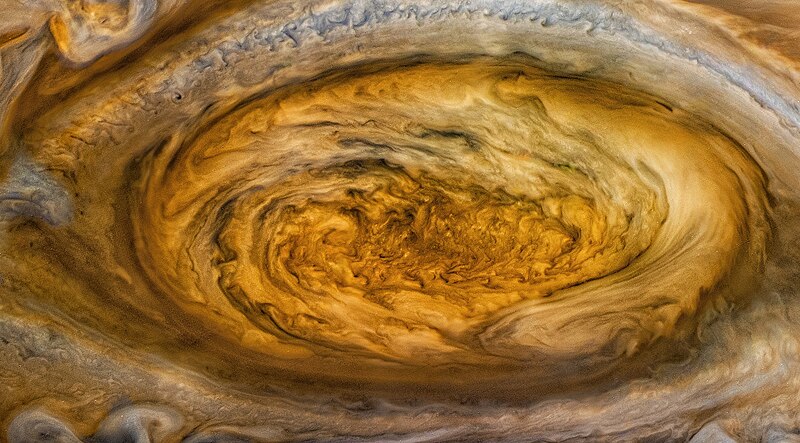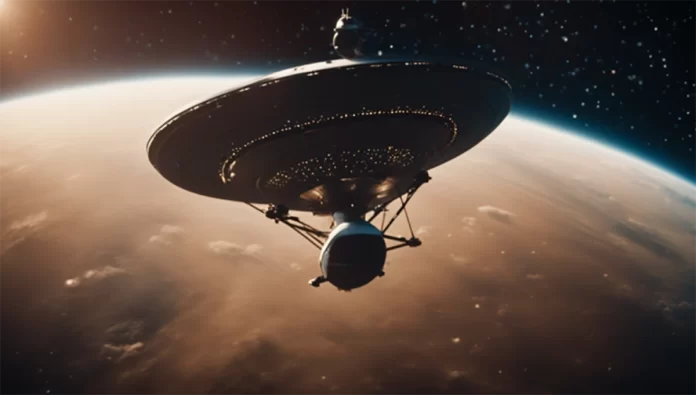Voyager 1: 50-Year’s Journey – Scientific Research on Space Technology
On September 5th, 2027, the Voyager 1 will have been officially traveling in space for 50 years. At this date, given its current speed of around 38,000 mph, it is expected to be 176 astronomical units or about 24 light hours away from the sun. However, if it travels at this speed, it would take 300 years to reach the inner boundary of the Oort Cloud, and 40,000 years before it reaches another star.
Nevertheless, over the next billion years, where will it travel? And what will it see? But before answering that, let’s take a step back.The primary mission of Voyager 1, along with its twin, Voyager 2, was to explore the outer planets of the solar system. Voyager 1 was specifically tasked with conducting close-up studies of Jupiter and Saturn, their moons, and their magnetic environments. Its trajectory was designed to take it past Jupiter in March 1979, and Saturn in November 1980. Interestingly, when it approached Jupiter, the spacecraft’s cameras captured intricate cloud patterns, massive storms, and the planet’s faint ring system.

One of the mission’s most iconic images is the detailed view of the Great Red Spot, which is a gigantic storm larger than Earth. Voyager 1 also turned its attention to Jupiter’s moons. It discovered that Io is the most volcanically active body in the solar system, showing erupting volcanoes and vast lava flows.
In addition, its images of Europa revealed a smooth, icy surface, hinting at the possibility of a subsurface ocean beneath the moon’s icy crust. A year later, the Voyager 1 maintains its communication with Earth through a High Gain Antenna, which is about 3.7 meters in diameter. This antenna focuses the radio waves, allowing the spacecraft to send and receive signals over the vast distances of space. It specifically communicates with the Deep Space Network, which is a collection of large radio antennas located in California, Spain, and Australia.
This placement, with each station positioned roughly 120 degrees apart in longitude around the globe, ensures that as the Earth rotates, at least one facility is always in a position to maintain a line of sight with any spacecraft, allowing for continuous communication. These large dishes are capable of communicating with spacecrafts billions of miles away which is how they can communicate with the voyager space probes. The signals travel at the speed of light and can take around 20 hours to reach Earth. This is because the Voyager 1 uses the high-gain antennas to direct a narrow beam of radio waves towards Earth, and since radio waves are a form of electromagnetic radiation, they travel at the speed of light.
The spacecraft’s ability to communicate and operate is fuelled by radioisotope thermoelectric generators. These generators harness electricity from the heat released by the decay of plutonium-238, powering Voyager 1’s instruments, onboard computers, and radio transmitters. The RTGs, with a half-life of about 87.7 years, experience a power decline of roughly four watts annually. It is anticipated that by 2025, Voyager 1 will lack sufficient power for any scientific instrument operation. Beyond this point, although Voyager 1 will continue its silent journey through space, we will no longer receive new data or signals from the spacecraft.
But in any case, the Voyager 1 carries a Golden Record, which is a 12-inch gold-plated copper disk containing sounds and images selected to portray the diversity of life and culture on Earth. It’s a time capsule intended for any extra-terrestrial life form or future humans who might find it. The record includes greetings in 55 languages, music from various cultures and eras, natural sounds of Earth, and a selection of images showing life and the human condition.
So how far can the voyager 1 even travel? Realistically, based on its trajectory and the vastness of space, the voyager 1 is far more likely to experience structural degradation over time due to factors such as micro meteoroid impacts, cosmic radiation, and thermal cycling, than to be significantly affected by the gravitational influence of a star or planet.
Therefore it’s possible that Voyager 1’s structure could remain recognizable for hundreds of millions to a few billion years, barring any catastrophic collisions with large objects. By this time, it will have travelled around a quintillion miles, which is only about 1.7% of the Milky Way’s diameter, but it would’ve have seen numerous stars.
Given its current trajectory towards the constellation Ophiuchus, during its lifetime, the voyager 1 could potentially pass by the constellations Hercules, Lyra, Cygnus, Draco, and Camelopardalis. The number of stars in these constellations could range from a thousand to tens of thousands. It’s worth noting, that over billions of years, the spacecraft’s trajectory will be influenced by many factors, including gravitational encounters such as those from molecular clouds, passing stars, or even the tidal forces from the Milky Way itself.
As the Milky Way rotates, its gravitational forces and those of nearby galaxies and interstellar objects will subtly alter Voyager 1’s course. These changes, though small over short time scales, can accumulate to significant deviations over eons.
Furthermore, over such vast timescales, the stars themselves will have moved significantly from their current positions, and the constellations as we know them, will have altered or ceased to exist in their present forms based on new stars forming and old ones dying, ensuring that the galaxy of the distant future will be significantly different from the one we see today.
Given these uncertainties, predicting Voyager 1’s exact journey becomes an exercise in probabilities rather than certainties. Its interaction with the interstellar medium, including potential encounters with dust, gas, and other particles, will also play a role in its long-term trajectory and condition. The spacecraft may also pass through regions of varying densities in the galaxy, from the relatively sparse outer halo to potentially denser regions nearer the galactic core, each with its own gravitational nuances. However, Voyager 1’s journey continues to embody the spirit of exploration and discovery that defines human curiosity as it travels the uncharted territories of scientific knowledge and understanding of the universe.
To read more informative articles related to Space Science – Click here
Check out our home page to read blogs on another categories.

